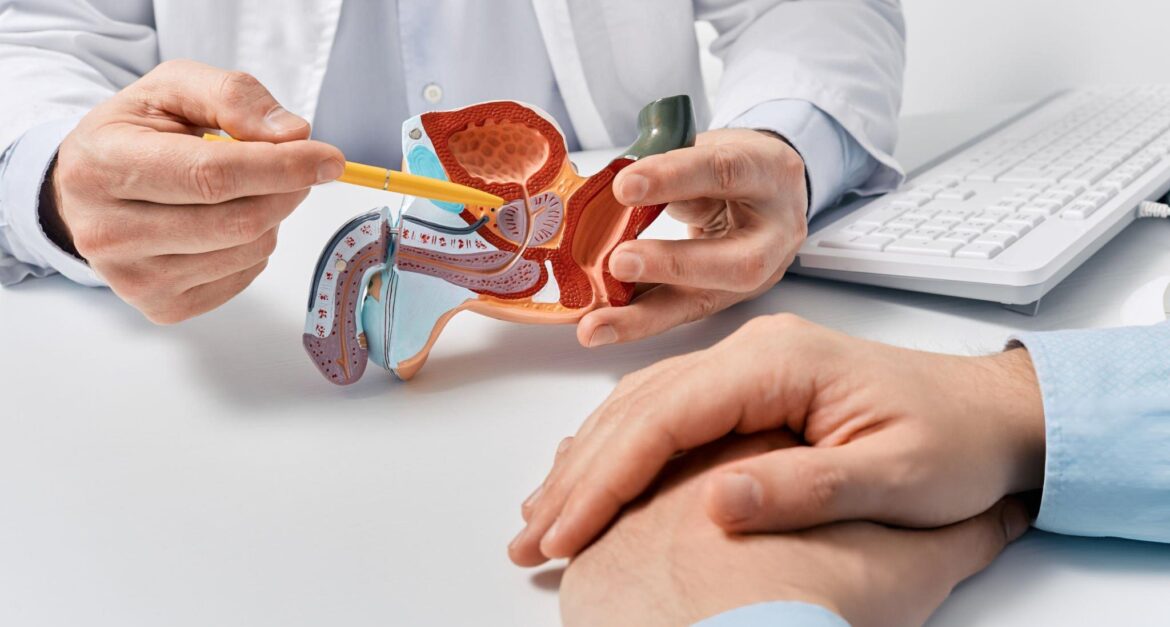
One of the most common types of cancer among men, prostate cancer, accounts for 11% of cancer-related deaths in men. Prostate cancer affects the prostate—a walnut-shaped gland located below the urinary bladder and in front of the rectum. The prostate gland produces seminal fluid and is responsible for nourishing and transporting sperms.
The spread of prostate cancer is slow and initially remains confined to the prostate gland. In serious cases, the tumour is likely to spread quickly to tissues surrounding the prostate, as well as the lymph nodes and bones. When it’s still confined to the prostate area, the cancer may not cause serious harm. On early detection, chances of successful treatment are more favourable. Prostate cancer is more common among men above 50 years of age, and the risk increases as they grow older.
Symptoms of Prostate Cancer
The main symptoms of prostate cancer tend to be different for every man. Sometimes it may also be a typical case of severe prostatitis symptoms, which is swelling and inflammation of the prostate gland.
The types of prostatitis and their symptoms are:
- Acute Bacterial Prostatitis: Acute infection of the prostate gland and bladder
- Chronic Bacterial Prostatitis: Recurrent or relapsing bacterial infection and UTI
- Asymptomatic Inflammatory Prostatitis: Absence of any symptoms
- Chronic Pelvic Pain Syndrome: Characterised by pelvic pain, urinary issues, and painful or premature ejaculation
Another common prostate problem is Benign Prostatic Hyperplasia (BPH) which is the enlargement of the prostate gland that often blocks the urethra. Common symptoms of BPH include:
- Frequent urination
- Weak or intermittent urine stream
- Urinary tract infection (UTI)
- Inability to urinate or empty the bladder
- Blood in urine
Signs of prostate cancer?
Owing to the closeness of the prostate gland to the bladder and urethra, these are most affected in the early-stage symptoms of cancer. The tumour constricts or adds pressure to the urethra, preventing the urine flow.
Although the early symptoms of prostate problems vary from patient to patient, some of the most commonly observed symptoms of prostate cancer are:
- Burning or painful sensation while urinating
The patient might experience extreme pain and burning sensations while urinating due to chronic pelvic pain and pressure on pelvic muscles.
- Inability to start or stop urination
This inability happens when there is an enlargement of the prostate. An enlarged prostate can add pressure on the urethra which can then affect urination.
- Frequent need to urinate, especially at night
Due to an enlarged prostate, the patient might have to visit the washroom more than he should, especially at night. The enlarged prostate can narrow your urethra making it difficult for the individual to empty the bladder. An individual loses control of their bladder.
- Decreased flow of urine
When the prostate gland gets big or enlarged it can block the free flow of the urine through the bladder and urethra.
- Blood in the semen, or in the urine
During ejaculation there might be chances that the blood vessels break along its route to the urethra. Blood from the broken vessels leak.
- Erectile dysfunction
Prostate cancer can affect the sexual desire and the ability to have sexual intercourse. The hormones block the testosterone caused by radical prostatectomy to further increase the risk of erectile dysfunction.
Other signs of prostate cancer include painful ejaculation, change in bowel habits, weight loss, fatigue, and pain in the pelvic region, back or hips.
In cases of metastasizing, i.e. when the prostate cancer spreads to nearby organs, it forms tumours in the adjacent organs or bones. The cancer may spread to the bladder or grow through the bloodstream or lymphatic system to bones and other organs.
Some of the most common symptoms of metastatic prostate cancer are as follows:
- Swelling and pain in the leg or pelvic area
- Numbness or pain in the hips, legs or feet
- Continuous bone pain, or fractures
What are the best methods to detect prostate cancer?
In most cases, prostate cancer has been diagnosed before its spread to distant organs or bones. Moreover, prostate cancer cells often grow slowly, and therefore do not require immediate treatment.
However, it is crucial to evaluate serious symptoms to diagnose the disease or confirm a previous diagnosis. Therefore, patients must take advice from trained specialists with experience in treating prostate cancer.
Today, there are several tests available to diagnose prostate cancer. It is recommended that men with one or more risk factors should consult medical experts about routine screening tests.
Men showing symptoms associated with prostate cancer usually are recommended to have a PSA test along with a digital rectum exam (DRE).
Prostate-specific antigen (PSA): This test is used to measure the level of PSA in the blood. The protein PSA is produced by the prostate gland, which may be a sign of prostate cancer at an elevated level. In some cases, a high PSA reading may also indicate noncancerous conditions such as prostatitis and BPH. If prostatitis is the result of a bacterial infection, the doctor prescribes antibiotics.
Digital rectal examination (DRE): This is the first test to evaluate the possibility of prostate cancer. The DRE procedure is a regular physical examination, during which the physician usually determines the presence of the prostate by feeling lumps or unusual growths.
Biopsy: In this procedure, a tissue sample is removed and examined for the presence of cancer cells.
Imaging tests: These include ultrasound, MRI, CT scan, and ProstaScint scan. These tests especially help to evaluate the size and stage of cancer.
Advanced genomic testing: This procedure is considered to examine abnormalities in cancer’s DNA.
Treatment options for prostate cancer?
Since there are many treatment options available for prostate cancer, an informed discussion with your doctor can help you decide what’s the best-suited option and medicine for the prostate problem.
- Surgery
If cancer has not spread outside the prostate gland, usually a radical prostatectomy is performed. During this procedure, the surgeon removes the entire prostate gland along with the surrounding tissues. Such a procedure can either be laparoscopic or robotic.
Today, the surgical approach is more suited to the patient’s comfort and ensures a faster recovery.
- Chemotherapy
In chemotherapy, drugs are injected in the vein or given orally to kill cancer cells and reduce the tumour size. The chemotherapy approach is becoming increasingly popular in treating prostate cancer.
- Radiation therapy
This therapy uses high-energy x-rays, gamma rays or particles to kill the cancer cells. Radiation therapy has two types: external beam radiation and brachytherapy (internal radiation).
In external radiation therapy, high-energy x-ray beams are directed at the tumour from outside the body. In internal radiation, a radioactive source is directly placed inside or near the tumour.
- Hormone therapy
This therapy lowers the level of male hormones (androgens) and is therefore also known as Androgen Deprivation Therapy (ADT) and Androgen Suppression Therapy. The procedure helps to restrain androgens from affecting the prostate cancer cells. Lower androgen levels also shrink the size of the prostate cancer and restrict their growth.
- Immunotherapy
Immunotherapy for prostate cancer boosts a patient’s immune system in order to help fight back against cancer cells.
The FDA has approved one immune therapy—a vaccine called Sipuleucel-T (Provenge). The vaccination, which is made with the help of a patient’s white blood cells, boosts the body’s immunity system. The vaccine, in return, attacks the prostate cancer cells.
- Clinical trials and surveillance
As the prostate cancer cells grow slowly, most cases do not require immediate medical intervention. In such cases of low-grade prostate cancers, the active surveillance approach is recommended. This approach, along with regular clinical testing, monitors indications and changing signs of prostate cancer and helps specialists evaluate the further course of treatment.
In closing
Patients undergoing treatment for prostate cancer may have to deal with distressing symptoms of the disease or unpleasant side effects of the procedure.
The aftermath of the treatment often hampers the patient’s quality of life. It is, therefore, crucial to be aware of the early signs of prostate cancer, in addition to choosing hospitals offering intensive care, and a treatment program that avoids delays and preserves the patient’s well-being.






